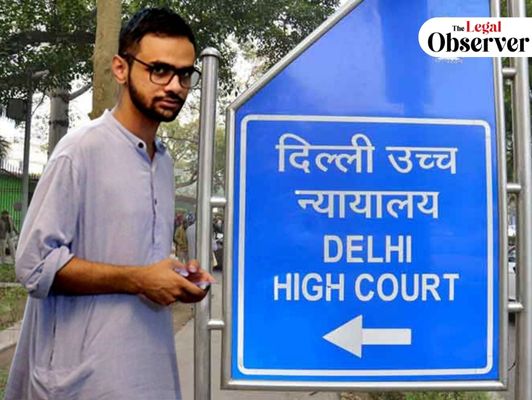The Delhi court has determined that there are “reasonable reasons” to believe that Umar Khalid, an accused in the more serious conspiracy proceedings relating to the Delhi Riots, is guilty as charged.
The Delhi High Court denied bail to student activist Umar Khalid in the larger conspiracy case involving the Delhi riots, noting that the protests against the Citizenship Amendment Act, 2019 (CAA) and the 2020 North-East Delhi riots were presumptively planned at various “conspiratorial meetings” held from December 2019 through February 2020, some of which Khalid also attended.
Khalid’s name was repeatedly mentioned throughout the conspiracy, according to a division bench of Justices Siddharth Mridul and Rajnish Bhatnagar. They further noted that he belonged to WhatsApp groups like DPSG and Muslim Students of JNU and had attended numerous conspiratorial meetings.
The argument made by Khalid’s counsel Senior Advocate Trideep Pais that his client is a “researcher and his bent of mind may be determined from his doctoral”
A protest was organized. It was “not a regular demonstration,” as defined by political culture or democracy, but rather one that was much more damaging and harmful and was intended to have highly serious repercussions.
According to the premeditated strategy, roads were purposefully blocked to impede and interrupt vital services to the people living in North-East Delhi, causing fear and a frightening sense of insecurity.
The essence of such a prepared plan is the attack on police officers by female demonstrators in front, followed by other regular citizens, and turning the area into a riot. As such, the incident would presumptively fall under the term “terrorist act.”
Terrorism is an act carried out with the intention of upsetting the social order and instilling fear in the hearts and minds of some members of society. More evidence that it was preplanned can be found in the weaponry used, the attack’s method, and the deaths and destruction it produced.
From the start of the conspiracy through the conclusion of the ensuing rioting, the appellant’s name was often used. He was, it must be said, a part of the JNU Muslim students’ WhatsApp group.
On various days, he took part in gatherings held at Jantar Mantar, Jangpura Office, Shaheen Bagh, Seelampur, Jaffrabad, and the Indian Social Institute. He belonged to the WhatsApp group DPSG (Delhi Protest Support Group).
In his Amrawati Speech, he made mention of the US president’s trip to India. According to the CDR analysis, the appellant and other co-accused made a number of calls soon after the rioting.
Primarily, it appears that the conspiratorial meetings held between December 2019 and February 2020 are where these protests and riots were planned.
The cumulative testimony of the protected witnesses shows that the appellant participated actively in the protests organised against the CAA/NRC and was present during them.






